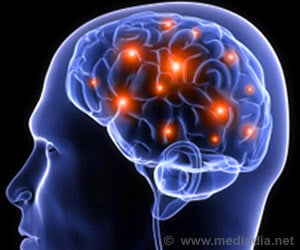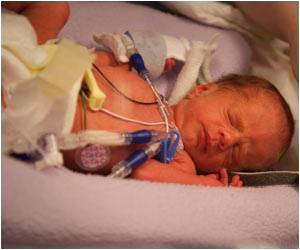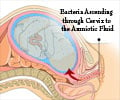Hypoxic-ischemic encephalopathy (HIE) babies may suffer brain injury and oxygen deprivation within days to hours of being born. However, congenital heart defects (CHD) babies are steadily deprived of oxygen for longer—often months—in utero.

‘The study findings may pave way to earlier interventions for children with oxygen deprivation in utero.
’





HIE babies suffer brain injury and oxygen deprivation within days to hours of being born, while CHD babies are steadily deprived of oxygen for longer—often months—in utero. Both groups are known to be at high risk for neurodevelopmental disabilities as they grow older, in areas ranging from motor skills to attention to behavioral issues. “You have two sets of kids who, before or during birth, have a brain injury and then end up having some delayed or altered development and problems at school age,” said Patrick McQuillen, MD, UCSF professor of pediatrics and neurology, and the study’s corresponding author.
“We wondered if the newborn brain, when faced with something challenging at different times, responds in the same way. What we found was the brains of these two sets of babies looked very, very different.”
Brain differences linked to outcomes
The researchers found that the distinct differences in brain wiring between the groups correlated with motor and language outcomes later. Specifically, they found the CHD newborns had worse language function at 12 to 18 months and worse cognitive, language and motor function at 30 months than the infants born with HIE, whose outcomes at both time points were in the normal range.
Advertisement
Language delays appeared to be driven by expressive, not receptive, language deficiencies, the study authors noted.
Advertisement
The researchers will continue to follow the babies in the study and were recently awarded a grant from The Children’s Heart Foundation to conduct additional brain imaging and testing of the subjects at school age. Their hope is that by understanding how the brain connections work and match to developmental outcomes, researchers will be able to link children with brain injuries to early intervention more quickly. Eventually, children may even have treatments tailored to their type of brain injury.
“We’re not quite there yet,” McQuillen said. “We are still in the stage of describing what’s different, and using those patterns to make predictions about outcomes. But I am hopeful about where this is headed.”
Co-Authors: Additional authors on the study include Shabnam Peyvandi, MD, MAS, and Stephany Cox, PhD, from the UCSF Department of Pediatrics; Dawn Gano, MD, MAS, from the UCSF Departments of Pediatrics and Neurology; Duan Xu, PhD, and Olga Tymofiyeva, PhD, from the UCSF Department of Radiology. Alice Ramirez, MD, was a UCSF critical care fellow at the time this research was conducted.
Funding: This study was supported by NIH grants P01NS082330 and K23NS099422.
Source-Eurekalert















